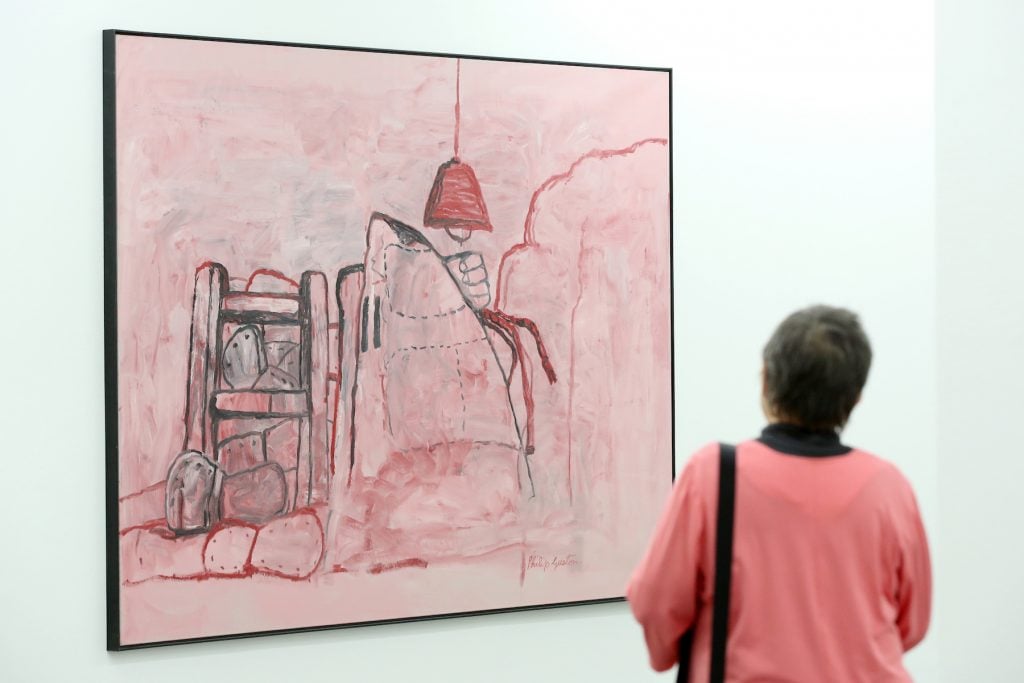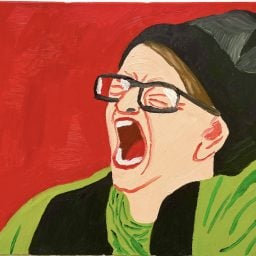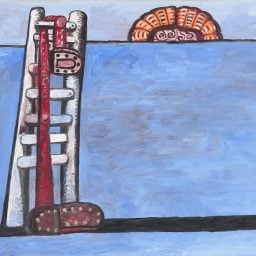For the last weeks, the museum world has been locked in intense, multi-fronted debate over race, self-censorship, social justice, appropriation, cancel culture, and a lot more, after the National Gallery of Art and three other museums suddenly postponed a long-planned retrospective, “Philip Guston Now.” Writing about it would be easier if I had a simple, pick-a-side kind of take. Emotional and unambiguous calls to action are what carry in this news environment. Basically, either “Guston Must Go” or “‘Philip Guston Now’… Now!”
My impulse is more that I need to understand why the debate is taking the form that it is, then to try to work through what that means.
The issue at hand is whether this artist’s critically lauded paintings of goofy-sinister, Klan-hooded cartoon figures would have been insensitive to show now, despite the fact that Guston intended them to be—and they have always been read as being—about the banal evils of white racism. Speaking to my colleague Julia Halperin last week, National Gallery of Art director Kaywin Feldman related the cancellation to the current conversation museums are having about Black Lives Matter and their moves towards greater diversity, as well as the NGA’s own shoddy past treatment of its frontline workers. They can’t afford, right now, a scandal about racial insensitivity if they hope to advance on those fronts. Perhaps adding a Black curator to the Guston show, she has theorized, might open up perspectives that make it more defensible.
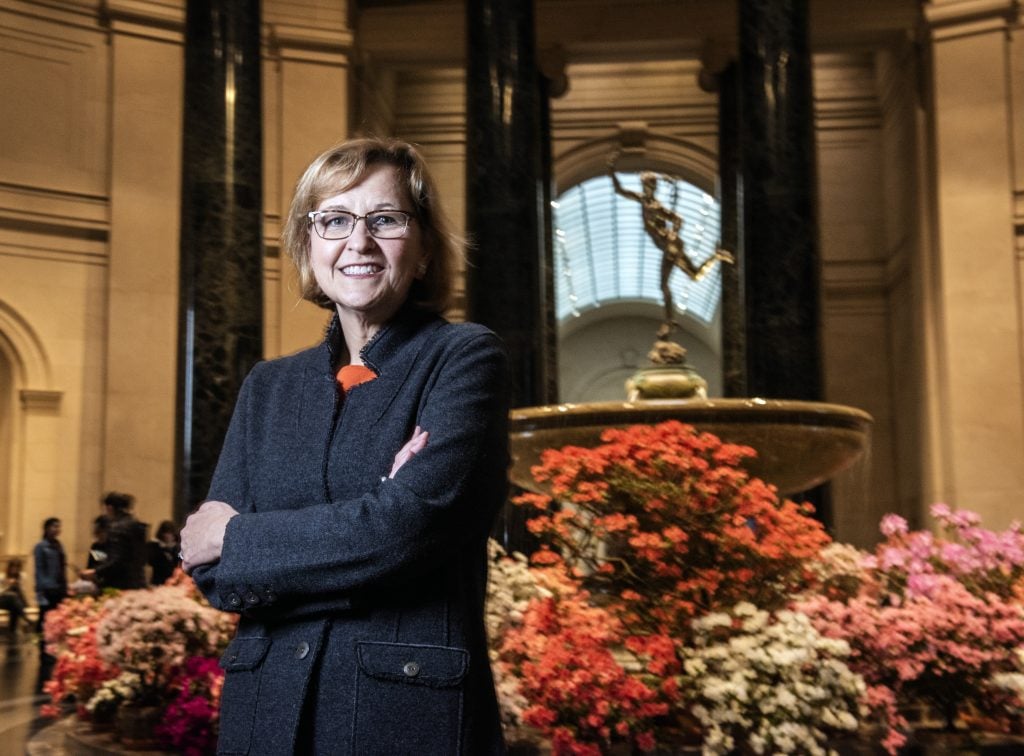
Kaywin Feldman, after her first year as director of the NGA, in Washington, DC. Photo by Bill O’Leary/The Washington Post via Getty Images.
These questions about the whiteness of the museum—and art in general—are really important ones. But it seems to me that the drive to increase diversity has to be approached as a good in and of itself. Framing those efforts as being about containing controversy puts a lot of pressure on Black staff and Black artists. And increasing diversity and sensitivity alone is not likely to solve the larger problems museums are facing, since museums exist in the midst of a very unequal and increasingly enflamed world.
I think of Keeanga-Yamahtta Taylor’s account, in From #BlackLivesMatter to Black Liberation, about how in the 1960s and ‘70s, the US elected its first wave of Black mayors on the back of the Civil Rights movement—just in time for them to have to preside over the urban crisis and impose austerity on Black communities. Something like that is in danger of happening now. Because museums are facing existential crises of all kinds.
The statement announcing the rescheduling of “Philip Guston Now” said that it would be returned at “a time at which we think that the powerful message of social and racial justice that is at the center of Philip Guston’s work can be more clearly interpreted.” What, then, are the conditions for such a “clear” interpretation? When—outside of a major cooling off of social tensions that doesn’t at all look to be on the horizon—can we expect this?
Clearly, there are a host of factors at play here, not all of which I am qualified to talk about. I want to add two concepts to the discussion of the competing new pressures museums are under: “context collapse” and “paranoid reading.”
The former leads me to believe that the situation reflects more objective pressures than are conceded by those who think the NGA has simply suffered a loss of nerve and should just tough it out.
The latter makes me think that there are more subjective choices to think through than those who argue that today’s climate makes Guston’s art simply too incendiary to be seen.
Context Collapse
The importance of context is one of the big themes of contemporary art: context makes meaning. But the museum has lost its ability to control context. The gallery experience and professional art discourse don’t center the “cultural conversation” anymore; the trending social media conversation clearly dominates. Whatever conversation is happening online is, effectively, the overriding context and provides the “real” meaning for the largest and therefore the most decisive audience.
The term “context collapse” is used to refer to the situation, characteristic of social media, where you cannot control the interpretive context for an utterance or an image. Nuance does not work well here. Any free-floating meaning is bound to be filled in by whatever community it intersects with. Original intention is easily overwritten.
Cross-reference with the volatile online context then potentially reframes how everything is encountered offline. At its most sinister, this collapse of contextual mooring makes it possible that large numbers of Americans now believe an online theory that Marina Abramović’s art is a literal portal to hell. Some determined 4chan trolls even managed to manipulate online context to such an extent that the ordinary “OK” hand gesture has been classified as a hate symbol by the Anti-Defamation League.
Meanwhile, images of art are now consumed in a feed in which people are also near-constantly seeing breaking-news horrors, creating new pressures on art’s meaning. In a 2016 essay, historian and Freedom Dreams author Robin D.G. Kelley tried to look, sympathetically but critically, at the limits of the new campus activist focus on getting rid of triggering material. Describing his own generation of activist-scholars, Kelley wrote, “it never occurred to us to refuse to read a text simply because it validated the racism, sexism, free-market ideology, and bourgeois liberalism against which we railed. Nothing was off limits. On the contrary, delving into these works only sharpened our critical faculties.”
But Kelley also framed the new sensitivities as rooted in a historically new situation, the objectively changed infrastructure of communication:
Activists framed their concerns and grievances in the language of personal trauma. We shouldn’t be surprised. While every generation of Black Americans has experienced unrelenting violence, this is the first one compelled to witness virtually all of it, to endure the snuffing out of Black lives in real time, looped over and over again, until the next murder knocks it off the news. We are also talking about a generation that has lived through two of the longest wars in US history, raised on a culture of spectacle where horrific acts of violence are readily available on their smartphones.
Museums were wrestling with the implications of this volatile situation well before the current social crisis. Thus, at the 2019 Whitney Biennial (the one that followed the 2017 protests over Dana Schutz’s Open Casket), wall labels were brimming with attempts to get ahead of any news development that could transfigure the art’s meaning.
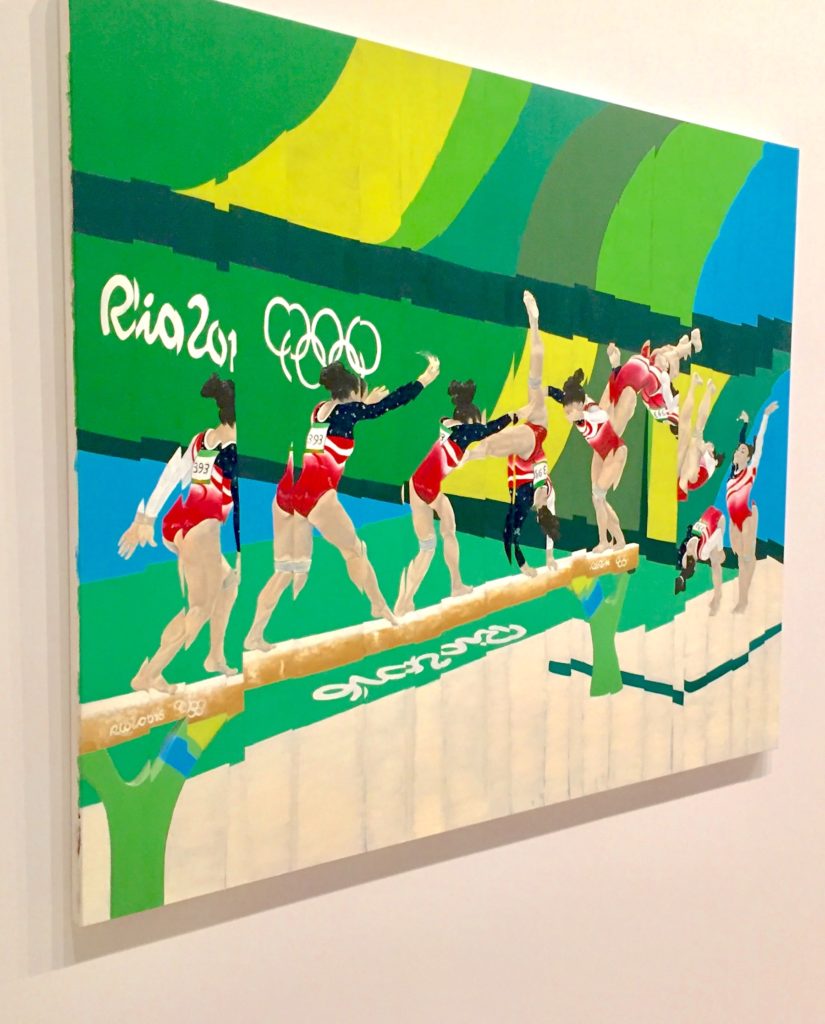
Jeanette Mundt, Born Athlete American: Laurie Hernandez I (2018). Image courtesy Ben Davis.
A 2018 Todd Gray photo sculpture incorporating a reference to Michael Jackson had a label that explained: “Michael Jackson was accused of child sexual abuse in 1993 and then tried and acquitted for the crime in 2005. New allegations surfaced in a documentary released on HBO earlier in 2019.” Text for a painting by Jeanette Mundt of female gymnasts was compelled to note: “Not long after Mundt began this series, which she continues to work on, news broke that the USA Gymnastics national team doctor sexually abused many young gymnasts including the women who appear here.”
Unfortunately, while the now paper-thin membrane between art spaces and the news renders the museums’ postponement of Guston understandable, this same situation also renders the museums’ proposed solutions long shots. All of them—including the addition of a Black curator—center on forms of contextualization.
Kaywin Feldman of the NGA told Artnet News, “there needs to be context around his work showing the hooded figures.” But she also said that “it’s flawed to say that museums have to make audiences understand our scholarly interpretation of the work.” That’s a deadlock.
Paranoid Reading
One of the most-cited statements in support of the postponement of “Philip Guston Now” came from NGA trustee Darren Walker, head of the Ford Foundation, an institution that has been driving the conversation about inclusion in the arts. He, again, was explicit that the changing conversation demanded new contextualization:
An exhibition organized several years ago, no matter how intelligent, must be reconsidered in light of what has changed to contextualize in real time. I agree with the decision to postpone the exhibition so that the museums can ensure that we sensitively and thoughtfully present the works and accompanying public programs. By not taking a step back to address these issues, the four museums would have appeared tone deaf to what is happening in public discourse about art.
The call for more context was almost immediately rendered ironic when Walker followed up on Twitter with this: “In a recent interview, I used the term ‘tone deaf’ inappropriately & out of context from its literal definition.” He continued in a series of tweets to apologize at length, concluding, “I am deeply sorry and personally pledge to do better.”
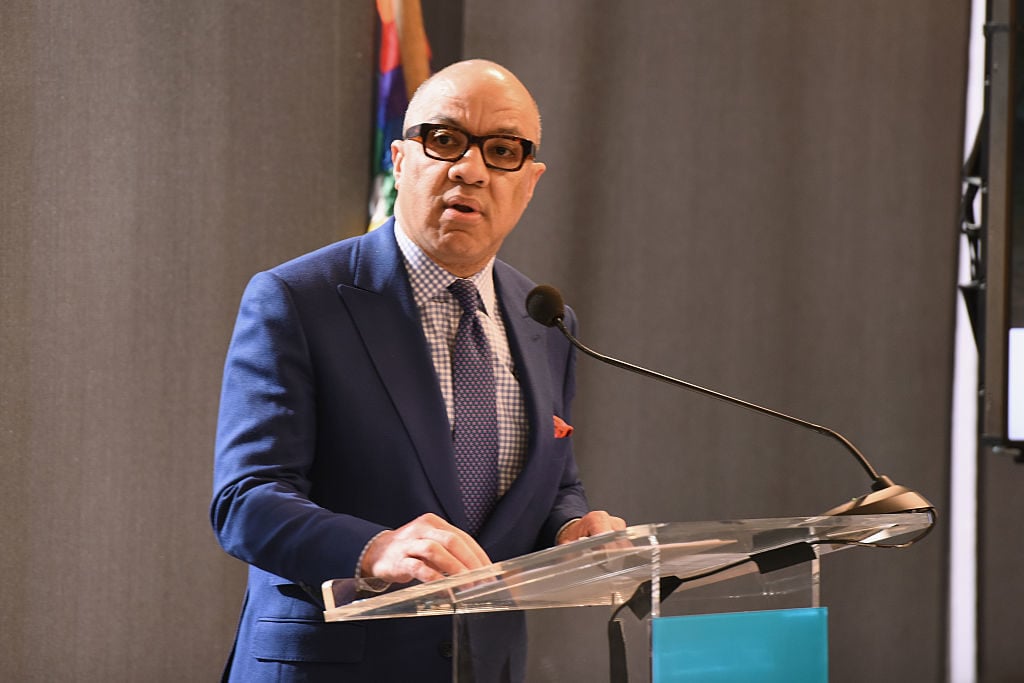
President of the Ford Foundation, Darren Walker. Photo by Dave Kotinsky/Getty Images for Ford Foundation.
Language changes, and that’s a good thing. But the term “tone deaf” is not widely understood to be offensive; the most widely cited guides to sensitive language offer no specific references to it. Nevertheless, here is Darren Walker, one of the most powerful people in the arts, compelled not just to issue a note but a full-on public apology, as if he were a celebrity who had been caught on camera in a bigoted tirade.
The increasing spiral of scrutiny makes me think of the essay “Paranoid Reading and Reparative Reading,” by the late queer theorist Eve Kosofsky Sedgwick. It’s a dense but important read, informed by psychoanalysis, and I’ve been struck by how much it resonates with the widely shared sense of how unwieldy social-media politics has become. Writing in the 2000s, well before the social-media age, Sedgwick was trying to show the problems with the tendency towards what she called “paranoid reading” across a variety of leftist academic discourses, from Marxist criticism to feminist studies to New Historicism to queer theory.
A “paranoid reading” was any style of interpretation in which, no matter the object at hand, the exposure of its secret negative side would recur as the main point of interpretation. To be clear: Sedgwick was a lefty. She was very much not making the argument that culture wasn’t full of hidden structures of oppression and power. She was saying that the impulse to point out what was “problematic” was a particular theoretical style people absorb in a variety of academic settings, that created a particular climate of reading and receiving culture, with a particular structure and set of consequences that were worth understanding.
Among other things, “paranoid reading” was characterized by exactly the kind of anticipatory quality we now see in the museum discussion: “The first imperative of paranoia is There must be no bad surprises.” The worst thing, within this style of reading culture, is to have been accused of having missed evidence of something bad, and failing to flag it for others; therefore, the paranoid reader shaped their own personal aesthetic reactions on behalf of an imagined third party. The style lent itself to the kind of argument based, not around the fact that an association is there, but that someone else might make an association.
The consequence, as Sedgwick put it in a memorable phrase, is that this kind of critical disposition “seems to grow like a crystal in a hypersaturated solution, blotting out any sense of the possibility of alternative ways of understanding or things to understand.” Which is exactly the case when the projected mis-construal of the Guston drawings of Klan-inspired figures completely dominates every other potential approach to the show.
I think that this much bigger issue is the unspoken subtext of a lot of the fierce critical pushback to the Guston postponement: a widespread but otherwise inarticulable sense among many artists and writers that art discourse has become a referendum on larger injustices in a way that has crowded out all other “ways of understanding or things to understand.”
Is Now a Good Time?
The good that a Philip Guston show could do for the world is modest, in the big scheme of things. I doubt that his paintings and drawings, as fascinating as they are, would change many minds as anti-racist propaganda. That’s not really what they were made to do, and framing art in such directly instrumental terms does art no favors. By contrast, as a goal, avoiding potential hurt seems like a very tangible good.
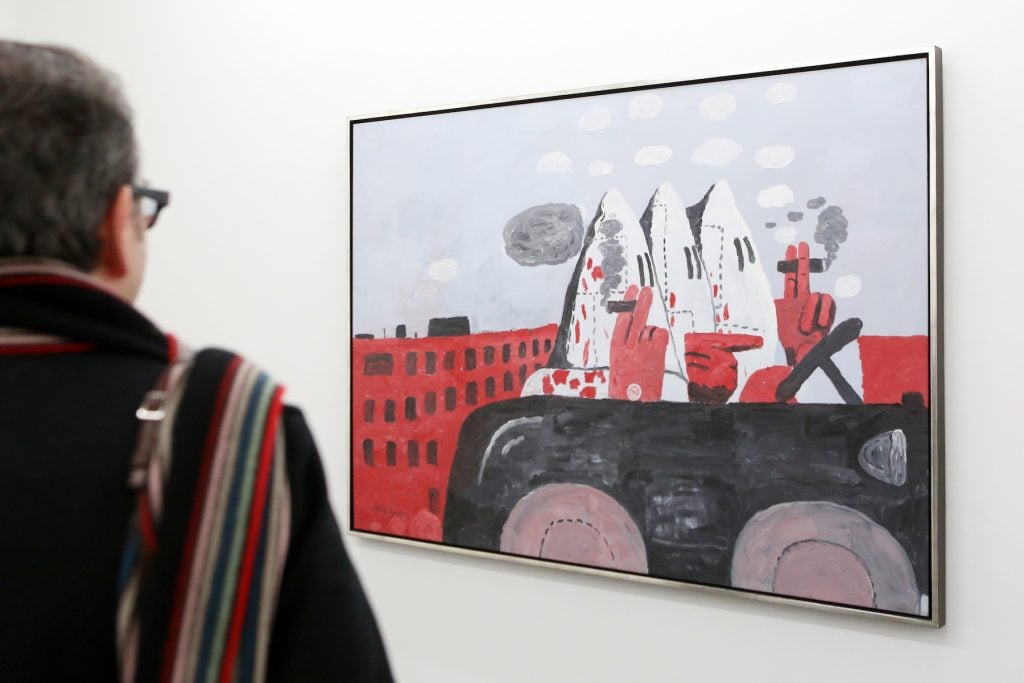
A visitor looks at the work Riding Around by Philip Guston in the exhibition rooms of the collection Falkenberg in Hamburg, Germany, 21 February 2014. (Photo by Bodo Marks/picture alliance via Getty Images)
But part of why I find Sedgwick’s framework useful is that she focuses on the ways that the “paranoid reading” style also imposes its own political costs. In being so total, she argued, it lost sense of a balance of where to direct energies, and thus ended up as a poor tool for building “effective oppositional strategy” to combat rising, openly reactionary forces.
“I’m a lot less worried about being pathologized by my therapist than about my vanishing mental health coverage—and that’s given the great good luck of having health insurance at all,” she wrote. (I am sure Sedgwick also cared about therapeutic bias; I think she’s saying that it’s a matter of prioritizing efforts.)
“It’s not a good time for rational discussion,” Feldman said of the timing for the Guston show. But it’s not a great moment to be perceived as “cancelling” a show either. “Cancel culture” is the most emotionally resonant issue that the extreme right has going for it as it fights to woo people in these turbulent times. A solid majority of the US public thinks it is a problem: 56 percent of Americans think it is a “very big” or “somewhat big” problem, including 79 percent of Republicans, 58 percent of independents, and 47 percent of Democrats. This is why Trump and his allies harp on it so much.
Ben Shapiro, the to-my-ears repellant and mediocre conservative commentator whose slogan is “facts don’t care about your feelings,” has grown unimaginably popular for pointing out the seeming contradictions of social-justice culture. The New York Times noted that Shapiro got more interactions on his Facebook page in August than the main pages of ABC News, NBC News, the New York Times, the Washington Post and NPR combined.
To be clear, I do think some of the “cancel culture” scare is just powerful people whining about being criticized online. When the National Review writes, of the Guston affair, that “today, the Cancel Culture is the Ku Klux Klan, this time with college degrees,” that’s as warped an alternate-universe view, in its way, as the idea that Marina Abramović is a high priestess of Satan—the author knows that the KKK actually murdered Black people, right?
But halting a show by a white artist about how the Klan is bad for being racially insensitive is custom-designed to make the “facts don’t care about your feelings” crowd look like the reasonable defenders of nuance. As A. Sivanandan long ago argued, redirecting so much liberal energy into the terrain of symbolism “played into the hands of the Right and provided them the modicum of truth necessary to sustain the Loony Left image in the public mind.”
In fact, this was the exact point of 4chan’s effort to troll people into paranoia about the “OK” symbol. “Leftists have dug so deep down into their lunacy,” wrote one of the original engineers of the campaign. “We must force [them] to dig more, until the rest of society ain’t going anywhere near that shit.”
I don’t know the exact math by which you balance the good of avoiding genuine anguish against the bad of isolating anti-racist sentiment from wider layers of sympathetic people—but the latter is not an imaginary danger.
Narrative Consequences
Our disintegrating world offers daily evidence of hostility to Black and other oppressed people. Again, what I like about Sedgwick’s framework is that she clearly separates her critique from one that denies these facts.
Her alternative to paranoid reading was what she called “reparative reading.” This was a style of reading (or looking at) the cultural object with an eye for what there was to love in it, for giving the benefit of the doubt, looking for the places where a detail might surprise you or be read against the grain. Neither way of reading was “right.” The paranoid style, she thought, was almost synonymous with social criticism; the reparative style could also be “depressive,” that is, it could involve repressing issues that needed to be dealt with.
But the domination of the paranoid style, Sedgwick also thought, tended to make gear-switching between critical and sympathetic postures more and more difficult: “Reparative motives, once they become explicit, are inadmissible in paranoid theory both because they are about pleasure (‘merely aesthetic’) and because they are frankly ameliorative (‘merely reformist’).” Sedgwick never explains why paranoid theory might have gained so much purchase in the arts and humanities, which you would think might be more invested in celebrating the “merely aesthetic.” I think that it might have to do with disciplinary insecurity—under attack and afraid of being painted as frivolous, it’s easy to reach for theories of unbending seriousness.
I hope that the NGA can find itself to a place where it can institutionally stand behind “Philip Guston Now.” Perhaps, once you have identified “context collapse” as an objective problem, then you can rethink the presentation of the art in the galleries. Maybe “extreme contextualization” might make a difference as a counterweight to extreme decontextualization—literal moral sign-posting to make the museum’s take on a potential controversy so crystal clear that it can’t reasonably be read out of context. I’m ambivalent about this idea: this form of display is likely to look as unnecessarily obvious and clunky, to those used to the clean white cube, as sentence-length web-media headlines seem compared to old-school poetic magazine headlines; the former are exactly designed to read in the contextless stream of digital space.
Alternatively, once you think about “paranoid reading” as a particular critical habit of mind, then maybe it’s possible to claim reparative alternatives without them being framed only as a conservative “return to pure art.” It is possible to think of art less as imposition of propaganda—good or bad—and more as an opportunity to build forms of dialogue about important matters that are less self-isolating. But frankly, I don’t know if professional museums (or professional art commentators) have the credibility to pull this off, given how high the stakes have become. For his part, Robin D.G. Kelley was calling for community-based study groups as the basis for “intellectual communities held together by principle and love” as the lever that might shift discourse in a productive direction.
These are big, difficult tasks without quick or readymade answers. Picking apart the objective and subjective factors at play is not at all easy, least of all in a situation as polarized and demanding of clear sides as the one that we are in now.
